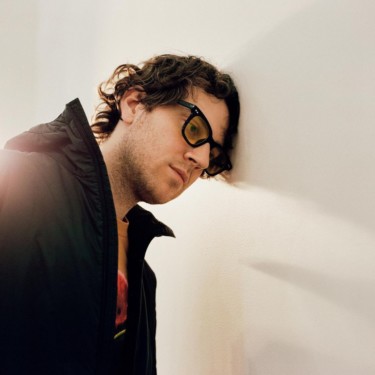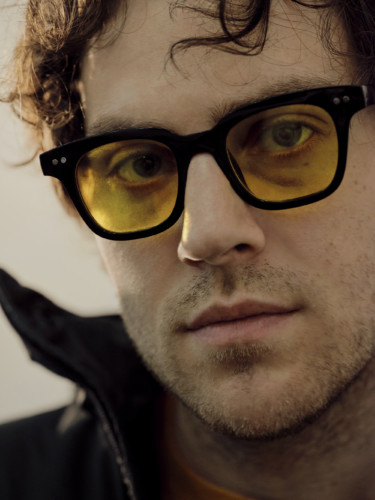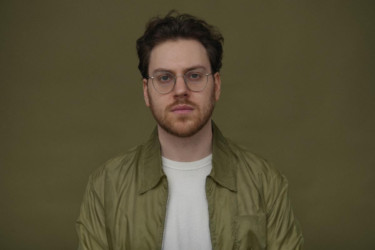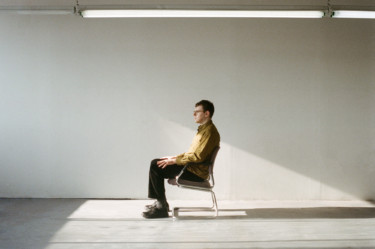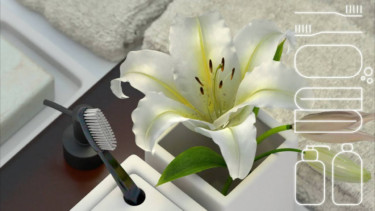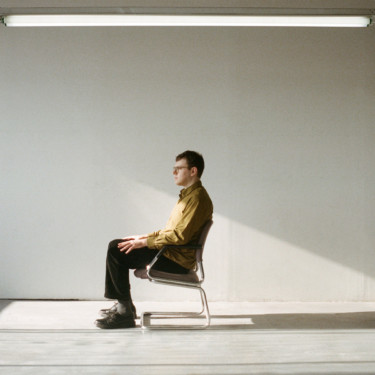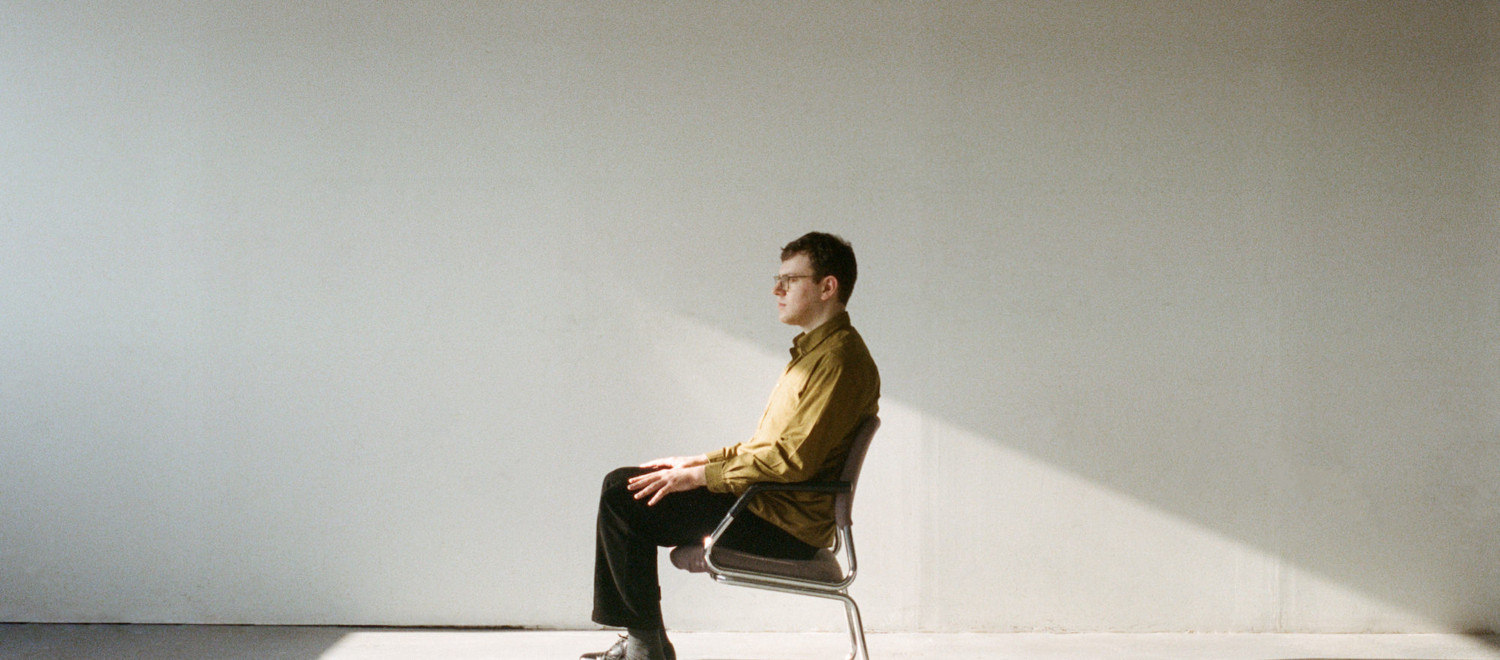
- INTERVIEWSOctober/31/2019
-
[Interview]CFCF - “Liquid Colours”

「無印良品のバックグラウンド・ミュージックのようなもの」「ジャングルは資本主義の音である」「スーパーコマーシャル」──。これらは、カナダ、モントリオールを拠点とする音楽家CFCFこと、マイク・シルヴァーが、その最新アルバム『Liquid Colours』を自身で形容した言葉を一部抜粋したものだ。
2015年に〈1080p〉よりリリースされた『The Colours of Life』の続編的作品であるという今作は、「Re-Utopia」に始まり、ラストに収録された「Re-Identity」までのおよそ42分間、徹底して統一されたある種のCFCFによる審美的な世界観が提示されている。CFCFは、今回のアルバムについて、自身で書き記したステートメントやニューヨークのアーティストBen Sifelと共同制作したミュージックビデオやアートワークなど、現時点でも様々なヒントを聴き手に提供しているが、それらの一連のテクスト自体もまた、まるで作品の一部のように、『Liquid Colours』の世界をさらに拡張するような役割を担っている。
今回、初となるジャパン・ツアーでは、東京、新潟、大阪の3都市での公演を控えるCFCF。以下は、その来日直前に行われたメールインタビューとなる。
__今作『Liquid Colours』は2015年に〈1080p〉よりリリースした『The Colours of Life』の続編となる作品とのことですが、二つのアルバムに共通している部分は何でしょうか。
前作『The Colors of Life』はイージーリスニングや企業のイメージソングのような1980年代後半から90年代前半のニューエイジの曲から着想を得ている。最初の曲が完成すると、どういうわけか別の作品に発展するアイデアが降りてきて、自分自身への挑戦の一つとして40分間止まらない作品を作るように徐々に自分を駆り立てていった。こうした美的制限を設けることで、ある特定の世界に集中して探索することができたと思う。
『Liquid Colours』も同じようなもの。90年代後半のアシッドジャズや渋谷系も前からよく聴いていて、前作のようなスタイルで続編をやるというアイデアも魅力的だと思ったから、最初から最後まで続編としてアルバムを制作した。元のアイデアを薄めていくようにニューエイジの音を再利用した『The Colors of Life』のスピンオフというアイデアが好きで、今ならまた別の馬鹿げたようなアイデアを盛り込んだ『Liquid Colours』のスピンオフを100枚くらい作れると思う。
__プレスリリースでは、本作について架空の「無印良品のバックグラウンド・ミュージック」という説明がありました。これはどのような意味なのでしょうか。
今回のアルバムを『The Colours of Life』の拡張として捉えていたとき、制作しながら現代の時代性、そしてミレニアル世代への転換期に発生した現代の感覚の商業的な風景について考えていた。〝ライフスタイル〟を提案するショップの存在はより顕著になり、カナダ西部では、偽の禅のためのアイテムや精神性を高めるようなアイテムまで販売していることも多々ある。
皮肉なことに、そこでのショッピングの体験や、並べられている商品は今回のレコーディングに際して確かなインスピレーション源となっている。無印良品の素晴らしいBGMやたくさんのアーティストとのコラボレーションは言うまでもないね。うまく理由が説明できないんだけど、作曲するときに必要になるインスピレーションは半透明なプラスチックのデフューザーなんだ。この感覚は無印良品というショップが私たちに何かを買うようにと吹き込んでいる欲望の感覚だとも言えるね。
__今回は、〈BGM Solutions〉という自身のレーベルからのリリースになっていますね。ここにも「BGM」という単語が入っていますが、このレーベルの名前にはどのようなメッセージが含まれているのでしょうか。
この名前を選んだことは、無印良品のような店舗のBGMや映画音楽、企業のイメージソングなど、音楽表現的な目的以外で制作を任された曲に対する私自身の愛を反映している。私がこれまでに制作したほとんどの曲にはなんらかの手段で蜉蝣(短命なもの)の要素が組み込まれていると思う。ダンスミュージックでさえ、ダンスミュージックが本質的に存在する状況よりも、クラブでダンスミュージックを流されている状況を想起させる。だから今後は自分自身のリリースであろうと仮にほかの曲をリリースする場合であろうと、付随的な要素のようなものを抱合していきたい。
__Bandcampの作品解説で、あなたは今作『Liquid Colours』の特徴であるジャングルを「資本主義の音」と説明しています。この記述について、詳しく教えてください。
それについて考えさせられた最初の作品の一つは、偶然視聴した、Lemon Dの「Manhattan Melody」がフィーチャーしたNickelodeonというテレビチャンネルのバンパー広告なんだ。それ以降、ジャングルとドラムンベースにフィーチャーしているNickelodeonの広告を探している。そうしているとき、基本的に広告や映画のサウンドトラック、一般的なメディアを通じて、11歳から13歳にかけてこれらに晒された自分自身の記憶も思い出したんだ。当時はファッションや音楽など一般的な流行が完全に飽和したときで、ジャングルとドラムンベースは驚くほど〝新しい〟サウンドのようなものに感じたのだと思う。
思わぬ運命のいたずらのようなんだけど、銀行かインターネットプロバイダーとの電話で待たされている間に、艶やかな偽のジャングルの保留音が聞こえてきたときには、もうすでにアルバムの約三分の一は出来ていたんだ。だから、ジャングルの亡霊はいまだに身の周りにいるし、世界の大部分では商業的な製品と関連付いたままだとも言えるね。
Nicktoons 2004- Hologram Bumper (Better Quality)
__「Healing Kurage」は、Ben Sifel がアートディレクションとデザインを担当したMVが公開されています。楽曲と映像、それぞれのテーマについて教えてください。
まず、アルバムのアートワークは、Ben Sifelと私で共同で制作したんだ。基本的に彼が思い付いた素晴らしいアイデアの数々を、二人で少しずつ削っていって、いくつかの素晴らしい作品のみに選抜していった。その中の中心的なものが、CGで表現された部屋の水回りの日用雑貨のコレクション。そして私たちは、才能豊かなモーショングラフィックデザイナーのAndrew Strasserと一緒に制作を進めて、この穏やかな仮想空間の絵画的なイメージまでたどり着くことができた。そして、実際に動いていて、質感をより感じられて、本当にこれらの物体を追い求め貪るかのように感じさせるものを作るべきだと確信したんだ。
トラックのタイトル自体はPaul Roquet(*マサチューセッツ工科大学准教授)の著書『Ambient Media』で言及されている、BGV(background video)のDVDのタイトルが由来になっている。その本自体は、商業的な欲望を抱える人間の自己肯定に用いられる新自由主義的な手段としての環境音楽の役割について考察している。
__アルバム1曲目のタイトルが「Re-Utopia」、最終曲が「Re-Identity」と、どちらにも「再び」を意味する接頭辞が付けられていますが、何か意図があるのでしょうか。
このタイトルは楽曲がすべて完成したあとに思いついたんだけど、『The Colours of Life』で最初と最後の曲を「Departure」と「Return」というタイトルにしたように、今回もまたシンメトリーの表現を加えたかったんだ。
今回のアルバムの場合は、出発点(Re-Utopia)は、理想化された社会、すなわち、ここで言及されている多くのポップカルチャーの中心にあるような誇張された社会が持つ共通の夢を示している。そして、回帰する地点(Re-Identity)は、商業がこのレコードのコンセプトに織り込まれているという意味において、出発点で示された理想主義的な約束は、けっきょくのところは偉大な社会というよりむしろ、個人や個性という感覚を売るための策略だったという、捉えどころのない移りゆく自己のアイデンティティに戻るということを示しているんだ。
__2017年に、同じモントリオールを拠点とするピアニスト、Jean-Michel Blaisとの共作『Cascades』を発表していますが、続編となる作品をリリースする予定はありますか。
彼の「roses」をリミックスできたことは嬉しいことだったけれども、次も一緒に曲を作ろうという話はまだできていないんだ。でも来年、モントリオールで開催される彼の公演には出演するつもりだよ。また一緒に仕事ができたらいいなと思っているんだけど、彼は今や有名人でとても忙しいからね。
__11月には東京、大阪、新潟での初来日公演を控えていますが、日本の音楽ユニット、dip in the poolとの共演も発表されています。過去のインタビューでは坂本龍一や清水靖晃など日本のコンポーザーから受けた影響について言及していますが、日本のアンビエントやポップスのシーンには、どのような印象を持っていますか。
初めて日本のポップシーンに触れたのはおそらく12歳か13歳のときで、テイ・トウワのアルバム『Future Listening』だったと思う。たしかMTVの広告か何かで「Technova」を聴いて、レコードを買ってみたら気に入って、しょっちゅう聴いていた。でも彼がDeee-Liteのメンバーだったことくらいしか知らなかったんだ。それから数年後、アート・リンゼイやララージはもちろん、それに加えて清水靖晃、坂本龍一、細野晴臣、富家哲といった多くの偉大な日本の音楽家たちがこのアルバムに参加していたことを発見した。これはまさに偉大な前例だと思う。
その後、そのときかなり流行していたカヒミ・カリィやピチカート・ファイヴ、チボ・マットなどが活躍していた時代の渋谷系の音楽をもっと研究した。2009年には坂本龍一の『Playing the Piano』に夢中になって、彼の過去の作品を探して、『Maxwell August Croy』というブログのおかげで信じられないほど広く多様なYMOに近しいプロジェクトを発見することができた。
これらのすべてのレコードが作られた方法には一種の潜在的な共有のスタイルがある。それは強い目的意識と、アンビエント音楽をも取り込むポップの長所である遊び心を持ってジャンルの境界を意識的に無視することの両方を伴うものだ。ある意味でそれはかなり商業的な音楽(例えば、私のお気に入りのレコードでもある、清水靖晃や坂本龍一や菅野よう子の広告のための音楽のコレクション)でありながら、それは偏った判断を押し付けるものではなく、ニッチでもない、少なくとも一般的な人口集団の一部であることを勧めているようにも感じる。
__今回の来日公演では、東京、大阪はクラブで、新潟ではお寺での開催となりますが、それぞれどのようなパフォーマンスを予定していますか。
『Liquid Colours』をフルで披露する予定だよ。今作を興味深くて楽しいショーに置き換えるためにベストを尽くすつもり。Abletonのような現代的なDAWを用いてレコーディングされ、アレンジされたエレクトロニックな作品をショーに変換することは、特にソロのときは、挑戦的な試みなんだ。だから、必ずしも演奏を会場に合わせなければならないという必要はない。もちろん会場の環境が音楽をより良くしてくれることは望むけれども、音楽が環境を素晴らしいものにするように、その逆もまた同じだと思う。私にとって理想的な演奏というのは、鑑賞する人々がステージから一歩退いて、その環境とその演者の両方をパフォーマンスとして一緒に見ることができるというものなんだ。
(2019.10.27, メールインタビューにて)
This “Liquid Colours” is the sequel work of “The Colours of Life”, which was released from 1080p in 2015. What are the common points with both?
With ’The Colours of Life’, my starting point was a late-80’s, early-90’s style of new age that was part easy-listening, part corporate-identity music. I had written the opening track, and then somehow the idea came along to have that evolve into another piece, and then gradually I pushed myself to do 40 minutes, kind of as a challenge to myself. Setting these aesthetic limitations helped me focus in and explore a specific world. With ‘Liquid Colours’, it was a similar thing—I had been listening to a lot of late-90’s acid-jazz, shibuya-kei, and the idea of doing a sequel in the style was enticing, and I wrote the album in the sequence it plays from start to finish. I liked the idea of it being this cash-grab spin-off of ‘The Colours of Life’, recycling many of the new-age sounds like I was diluting the original idea and now maybe I can do 100 ‘Colours’ LP’s with different stupid ideas at their core.
The press release describes this album as imaginary “MUJI background music”. What does that mean?
Since I was seeing it as an extension of ‘Colours of Life’, I started to think about the commercial landscape of this era, and this sense that around the turn of the millennium, home ‘lifestyle’ stores became more prominent, and in the west often selling a kind of calm faux-zen faux-spirituality. It’s tongue-in-cheek, but the shopping experience, the tactile experience and the materials used in the products at MUJI were all central inspirations for this record, not to mention their great BGM series of albums and their collaborations with artists. I don’t know how to express why, but sometimes all the inspiration I need for a song is a translucent plastic scent diffusor. It’s the sense of desire that a store like MUJI instills in us to buy things.
“Liquid Colours” was released from your own label BGM Solutions. You referred to background music in the label name too. What message or meaning is included in BGM Solutions?
In choosing the name it was firstly a reflection of my own love of musics commissioned for non-musical purposes, whether as environmental BGM for a store like MUJI, or film score, or corporate-identity music, and so on. I think most of the music I’ve made has incorporated ephemerality in some way. Even the dance music sometimes is meant more to evoke the situation of being surrounded by dance music in the background at a club, than of actually being that music. And going forward I will try to embrace that kind of incidentalism with the label, whether with my own releases or if I release others’ music.
You explained that jungle which is a feature of “Liquid Colours” is “the sound of capitalism” on Bandcamp. Please tell us in detail about this description.
One of the first artifacts that made me think of this was stumbling upon an old Nickelodeon TV bumper ad that featured Lemon D’s “Manhattan Melody”. And then finding even more Nickelodeon ads that featured jungle and d’n’b. And my own memory of that era at age 11-13 being exposed to this stuff basically through ads, movie soundtracks, sync placements. I think it was such an astonishingly ’new’ sound at the time, fashion and music and general trends moved towards it and it became ultra-saturated. And yeah, as a strange twist of fate I was already about 1/3 through writing the album when I heard some glossy faux-jungle while I was on hold with my bank or internet provider. So the ghosts of it are still around, and probably for a large segment of the world it remains associated with commercial products.
About the track “Healing Kurage”, this music video which Ben Sifel handled art direction and design has been released. Could you tell us about each theme of this track and MV?
Ben and I developed the album’s artwork together, which means basically he came up with a bunch of great ideas and together we whittled it down to a few really strong ones, the central one being this CG-rendered collection of bathroom products. We worked with a great motion graphics designer, Andrew Strasser, to realize this calm virtual tableau. After that was done, it seemed clear we should make a version that actually moved, that let you get more of a sense of texture and made it feel like you’d really peruse and covet these objects. The title of the track itself comes from the title of a DVD of BGV (background video) referenced in Paul Roquet’s book Ambient Media, an examination of ambient music’s role as an essentially neoliberal instrument of personal self-optimization for the demands of commerce.
We can see the prefix “Re” which means “again” in the first track “Re-Utopia” and the last one “Re-Identity”. Were there any special meanings in these track names?
The titles were admittedly after-thoughts after the music had all been finished, but I wanted some symmetry for the first and last tracks as I had with ’The Colours of Life’ titling the first and last tracks “Departure” and “Return”. In this case the departure point is the communal dream of an idealized society, a cartoonish version of which is at the core of a lot the pop culture referenced here (think Jet-Set Radio). And the return point is back to the elusive and ever-morphing self-identity, in the sense that since commerce is baked into the concepts of this record, the utopian promise at the beginning was ultimately a ploy to sell a sense of self-possession and individuality rather than any sort of actual great society.
In 2017, you released the album “Cascades” collaborating with the Montreal based pianist, Jean-Michel Blais. Do you have any plans to announce new works as a sequel with him?
We haven’t discussed writing more music together yet, although I was happy to contribute a remix of his song “roses” that I am proud of. However, I’ll be appearing with Jean-Michel at a couple of his shows here in Montreal in the new year. Hopefully more work together in the future! He’s a busy and famous guy now!
You are having your first Japan tour visiting Tokyo, Osaka and Niigata in this November. In Tokyo and Niigata, Japanese unit “dip in the pool” is also having a live performance with you. According to past interviews, you talked about the influences of Japanese composer, Ryuichi Sakamoto and Yasuaki Shimizu. What do you think about Japanese ambient music and pop music?
My earliest exposure to Japanese pop music was probably Towa Tei’s album ‘Future Listening’, at age 12 or 13. I heard “Technova”, probably in an MTV ad or something, and bought the record and loved it, playing it constantly, only knowing he’d once been a member of Deee-Lite. Years later I’d discover that Yasuaki Shimizu, Ryuichi Sakamoto, Haruomi Hosono, Satoshi Tomiie, and many other great Japanese musicians had all contributed to the album (not to mention people like Arto Lindsay and Laraaji). So I think that set a great precedent, and after that I dipped into more of the shibuya-kei of that era like Kahimi Karie, Pizzicato Five and Cibo Matto as it was all quite fashionable at that time.
I think in 2009 I became obsessed with Sakamoto’s ‘Playing the Piano’ and delved into his back catalogue, discovering the incredible wide array of YMO-adjacent projects, much of it thanks to Maxwell August-Croy’s rootblog. There is a kind of latent communal style to the way all of these records are made, with both a strong sense of purpose and a playful disregard of genre boundaries, which is a virtue of it being pop, including the ambient music. I think in a sense it is all quite commercial music (some of my favourite records being Shimizu, Sakamato and Yoko Kanno’s respective collections of music for advertising) and in that sense it feels very non-judgmental, non-niche, or at least very inviting to be part of the demographic.
During this tour, you are playing at music clubs in Tokyo and Osaka. Also, you will perform at a Church in Niigata. What kind of performance are you going to show in each city?
I will perform ‘Liquid Colours’ in full! I’m trying to my best to translate the music into an interesting and fun show. Converting a recorded and arranged electronic work (made in a modern DAW like Ableton) is a challenging endeavour especially when working solo, so the performances won’t necessarily be tailored to the venues, although I hope the settings will only add to the music and vice versa. For me the ideal performance is one where you are able to take a step back and see both the environment and the performer as part of the performance.

Liquid Colours:
01. Re-Utopia
02. Green District
03. Retail Commune
04. Aquascape
05. An Impossible Condo
06. Inorganic Streams
07. Translucently Happy
08. Healing Kurage
09. Oxygen Lounge
10. Anodyne Industries
11. Blobject of Desire
12. Last Century Modern
13. Closed Space
14. Subdivisions
15. Re-Identity
※日本のみでCD化
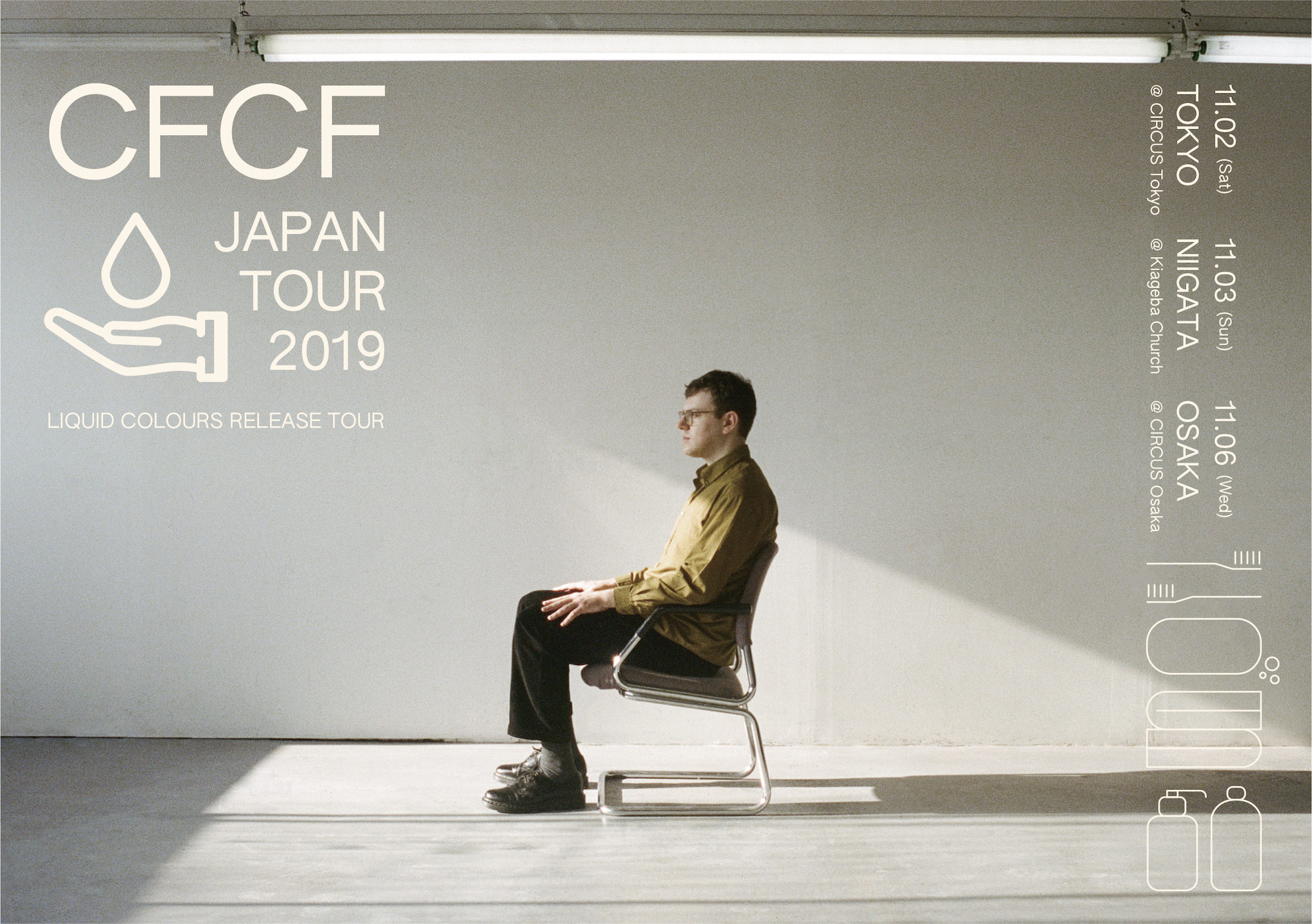
■公演概要
CFCF JAPAN TOUR 2019
東京公演
CFCF JAPAN TOUR 2019 – Tokyo –
日程:11/2(土)
場所:CIRCUS Tokyo
時間:開場 19:00 / 開演 19:30
料金:前売 3,500円 / 当日 4,000円(別途1D代金600円)
チケット:チケットぴあ (Pコード:167133) / Peatix / e+
LIVE:
CFCF
dip in the pool
Daisuke Tanabe
新潟公演
CFCF JAPAN TOUR 2019 – Niigata –
experimental room #30
日程:11/3(日)
場所:新潟・木揚場教会(新潟市中央区礎町通上一ノ町1957)
時間:開場 17:00 / 開演 17:30
料金:前売 3,500円 / 当日 4,000円 / 新潟県外からの方 3,000円 / 18才以下無料!
チケット:メール予約
info@experimentalrooms.com
(件名を「11/3チケット予約」としてご氏名とご希望の枚数をご連絡下さい)
LIVE:
CFCF
dip in the pool
Yojiro Ando
DJ:
Jacob
SHOP:
Oohata Coffee
大阪公演
CFCF JAPAN TOUR 2019 – Osaka –
日程:11/6(水)
場所:CIRCUS Osaka
時間:開場 19:00 / 開演 19:30
料金:前売 3,000円 / 当日 3,500円(別途1D代金600円)
チケット:チケットぴあ (Pコード:167135 ) / Peatix / e+
出演:
CFCF
speedometer.
Dove
文:杉田聖司(UNCANNY, 青山学院大学総合文化政策学部)
編集:東海林修(UNCANNY)
Photo by Tess Roby
![[Interview]CFCF - “Liquid Colours”|UNCANNY](https://uncannyzine.com/wp-content/themes/uncanny_v6/common/images/logo.svg)


